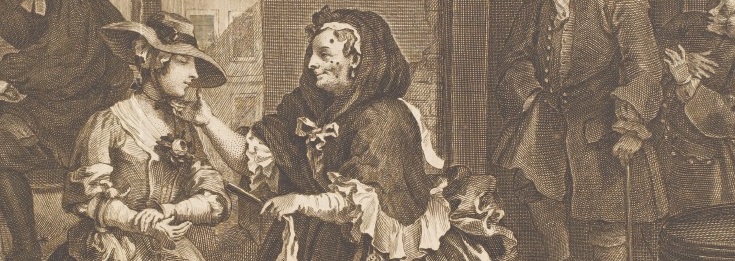
Kathleen Hudson introduces her new book, Servants and the Gothic, 1764-1831: A half-told tale.
In William Godwin’s 1794 novel Things as they are, or The Adventures of Caleb Williams, servant protagonist Caleb recounts a story of a complicated, often antagonist employer-employee relationship as a means of preventing the circulation of a future ‘half-told and mangled tale’. Caleb is one of the very few servant characters in early Gothic literature to adopt a first-person account for almost an entire novel, but his final words illuminate the core issue which defines of many servant narrators within Gothic fiction.
In attempting to express and explore truth in a chiaroscuro Gothic universe, personal narratives in such texts often take on a complex, subjective slant. Moreover, throughout the eighteenth century domestic servants developed a reputation as problematic figures within political and private spaces, representatives of ‘otherness’ whose voices potentially undermined both social and personal identity. Today, servants and their narratives in early Gothic fiction are frequently identified as unsophisticated plot devices, comic relief or foils for middle-class or aristocratic characters. They are, perhaps, all these things … but also suggest myriad possibilities both with and beyond these roles.
Servant Narratives and the Gothic, 1764–1831: A half-told tale is a study of the narrative performances and identities of servant characters within early Gothic novels, theatrical adaptations, and chapbooks, covering the period from 1764 to 1831 (i.e. the publication of Horace Walpole’s The Castle of Otranto to the publication of the 1831 edition of Mary Shelley’s Frankenstein, or The Modern Prometheus). This monograph recasts servant characters within early Gothic novels, plays and chapbooks as dramatically important in-text narrators who verbally or non-verbally perform a spontaneous yet suggestively-constructed exchange of dialogue, a moral or political insight, or a folkloric or gossip-based story.
In assuming a narrative role, Gothic servants destabilise social and domestic structures and modes of hegemonic empiricism, introducing alternative realities within their narratives and radically re-imagining the identities of other characters. Even readers with only a casual interest in eighteenth century fiction and Gothic studies acknowledge that speaking and acting servants are important to the progression of individual plotlines and the development of specific characters in works ranging from Hamlet to The Mysteries of Udolpho to Frankenstein. The book Servant Narratives and the Gothic shows that the servant’s role also has broader literary implications as an interrogation of Gothic traditions and innovations, and provides a comprehensive early Gothic survey exploring how early Gothic authors used servant narrators as authorial metonyms. Therein, Gothic servants reflect a range of private and political issues and anxieties, moderate character development, construct an aesthetic, and examine the sources and methodologies which define the Gothic itself.
Kathleen Hudson is Adjunct Professor of English at Anne Arundel Community College, and has published on a broad range of topics in early Gothic studies.


